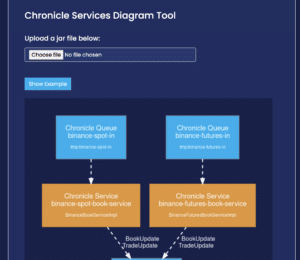The Evolution of Microservices with SOA: Navigating the Architectural Landscape
- February 09, 2024
- 6833 Unique Views
- 5 min read
The Evolution of Microservices with SOA: Navigating the Architectural Landscape 🗺️
Microservices represent a paradigm shift in the way we construct distributed systems. This comprehensive guide dives into the heart of microservices and service-oriented architecture (SOA), comparing their roles in current development ecosystems.
By understanding the evolution and the modern application of microservices, developers can harness their full potential for creating flexible, scalable, and resilient applications. 🚀
Microservices and SOA: A Comprehensive Guide 📚
Microservices and service-oriented architecture (SOA) are two popular architectural styles for building distributed systems. Both approaches share the goal of breaking down a large, complex system into smaller, more manageable components. However, there are some key differences between the two approaches. 🤔
In this comprehensive guide, we will explore the concepts of microservices and SOA in detail. We will discuss the benefits and drawbacks of each approach, and we will guide you on choosing the right approach for your next project. 💡
1. What are Microservices? An Introduction 👶
Microservices is an architectural style that structures an application as a collection of small, autonomous, and loosely coupled services. Each microservice is responsible for a specific piece of functionality and can be developed, deployed, and scaled independently. The microservices communicate with each other over standard protocols, such as HTTP/REST or message queues, to handle the overall application functionality. 🤝
The microservices architecture is designed to overcome the limitations of traditional monolithic applications, which can be challenging to scale, maintain, and deploy. By breaking an application down into smaller components, microservices can improve the agility, scalability, and resilience of software systems while enabling diverse technology stacks and faster development cycles. 💨
2. Why Microservices? Comparing with SOA ⚖️
Microservices have gained popularity for their ability to address challenges associated with monolithic architectures, such as scalability, flexibility, and resilience. They offer an approach that supports the rapid development and deployment of complex and modular software systems, making it easier for organizations to adapt to changing requirements and technologies. 🛠️
Service-oriented architecture (SOA) is another architectural style that has been widely used for building distributed systems. It shares some similarities with microservices, but the two have key differences. Here is a comparison between microservices and SOA:
Similarities
- Both promote the idea of breaking down large applications into smaller, modular components (services) that can be developed, deployed, and maintained independently.
- Both encourage using well-defined interfaces (APIs) to facilitate communication between services.
- Both focus on loose coupling and separation of concerns, allowing for greater flexibility and maintainability.
Differences
- Granularity: Microservices tend to be more fine-grained than services in SOA. While SOA services often include multiple functionalities or business processes, microservices are designed to have a single, well-defined responsibility.
- Communication: SOA usually relies on heavier communication protocols, such as SOAP and enterprise service buses (ESBs), which can introduce additional complexity and overhead. Microservices favor lightweight communication mechanisms, like REST or gRPC, which help to minimize latency and overhead.
- Technology stack: SOA often emphasizes the use of a standardized technology stack across all services, while microservices allow for greater flexibility in choosing the most suitable tools and languages for each service. This enables microservices to better take advantage of the benefits offered by different technologies.
- Governance: SOA tends to have a more centralized governance model, with a focus on reusability and enterprise-wide standards. Microservices promote a decentralized approach, giving teams more autonomy and encouraging them to make decisions based on the specific needs of their services.
- Deployment: Microservices emphasize independent deployment, enabling individual services to be developed, tested, and released without impacting the entire system. SOA services are typically deployed as a part of a larger, more monolithic application, which can hinder the speed and agility of the development process.
While both microservices and SOA aim to address similar problems, microservices offer a more lightweight, flexible, and decentralized approach. This makes microservices particularly well-suited to modern software development practices and cloud-native technologies, which prioritize agility, scalability, and adaptability. ☁️
3. Problems That Microservices Solve and Their Emergence 🦸♂️
Microservices emerged as an alternative to monolithic architectures to address various challenges and limitations associated with large, complex software systems. Here are some of the key problems that microservices help to solve:
- Scalability: Monolithic applications often struggle to scale as they grow in complexity and size. Microservices enable fine-grained scaling, allowing individual services to be scaled independently to meet the demands of specific application components. This improves resource utilization and ensures that parts of the application can handle increasing traffic and load. 📈
- Development and deployment speed: In a monolithic architecture, even small changes to the codebase may require a complete rebuild and redeployment of the entire application. This can slow down the development process and limit the frequency of releases. Microservices allow faster and more frequent deployments since each service can be developed, tested, and deployed independently. 🚀
- Flexibility: Monolithic applications typically use a single technology stack, which can be limiting when different components have varied requirements. Microservices architecture allows for the use of multiple technology stacks, giving developers the freedom to choose the most appropriate tools and languages for each service. 🛠️
- Resilience: In a monolithic application, a single point of failure can potentially bring down the entire system. Microservices help to build more resilient systems by isolating failures. When a service fails in a microservices architecture, it usually does not affect other services, and the system as a whole can continue to operate. 💪
- Maintainability: Large, monolithic codebases can be difficult to understand, modify, and maintain. Microservices promote a modular approach, organizing code into smaller, more manageable units. This makes it easier for developers to understand, troubleshoot, and maintain the codebase, leading to higher code quality and fewer bugs. 🐛
Microservices architecture emerged as a natural evolution in response to the growing complexity of software systems and the need for better ways to manage that complexity. Influenced by practices like Agile development, DevOps, and the growing popularity of cloud-native technologies, microservices offer a more modern approach to building and maintaining scalable, adaptable, and resilient software systems. 💻
4. Key Concepts and Benefits of Microservices 💡
There are several key concepts and benefits associated with microservices architecture:
- Loose coupling: Services are designed to minimize dependencies, allowing them to evolve independently and reduce the risk of cascading failures.
- High cohesion: Each microservice focuses on a single responsibility, making it easier to understand and maintain.
- Autonomous deployment: Microservices can be deployed and updated independently, reducing the risk of deployment-related failures.
- Domain-driven design: Microservices can be organized around business domains, promoting a deeper understanding of the problem space and facilitating team communication, Learn more about why Microservices and DDD are a perfect match 🤝
5. Challenges of Microservices 🚧
While microservices offer numerous benefits, they also come with their own set of challenges, such as:
- Increased operational complexity: Managing multiple services can increase operational complexity and require more sophisticated monitoring and observability tools.
- Distributed system complexity: Microservices introduce distributed system complexities, such as network latency, fault tolerance, and data consistency.
- Coordination and communication: Ensuring proper coordination and communication between different services and teams can be challenging. 🗣️
By briefly addressing these challenges, we set the stage for a more in-depth exploration of these topics later in the series.
6. Successful Case Studies 🏆
Several companies have successfully adopted microservices, demonstrating the real-world impact of this architectural style:
- Netflix: One of the pioneers in microservices adoption, Netflix has built a highly resilient and scalable streaming platform, serving millions of users worldwide.
- Amazon: Amazon transitioned from a monolithic architecture to microservices, enabling faster development cycles and the ability to scale individual components of their e-commerce platform.
- Spotify: Spotify’s backend is built on microservices, allowing it to effectively manage and scale its music streaming service across various platforms and devices.
These examples showcase the benefits of microservices in different industries and serve as an inspiration for adopting this architectural style. 🌟
References and Resources 📚
- History of Microservices
- Building Microservices: Designing Fine-Grained Systems. O’Reilly Media.
- Microservices Patterns: With Examples in Java. Manning Publications.
- Microservices.io — A comprehensive resource on microservices architecture by Chris Richardson.
In the next article (Part 2), to be published soon, we will explore the principles for designing and implementing microservices and the challenges and best practices for development, testing strategies, and security considerations. 🤓
Watch Java’s Place in the AI Revolution Webinar
Watch as Java Champions Frank Greco, Zoran Sevarac, and Pratik Patel feature in a live new webinar highlighting Java's place in the AI Revolution, focusing on Exploring AI/ML Using Pure Java Tools.
Watch Here!
Don’t Forget to Share This Post!














Comments (0)
No comments yet. Be the first.